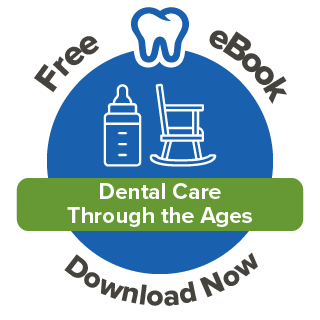By Andrew Hickey on Oct 10, 2022 @ 05:25 PM
Help conquer plaque and avoid dentures by using floss and gum
Key takeaways:
- Sugarless gum helps reduce plaque when you are on the go, but it does not replace flossing
- A study has shown 10 minutes of chewing sugarless gum removes 100 million bacteria from inside your mouth
- The most effective sugarless gum contains xylitol, which can even start preventing cavities while a child is in the womb
- Flossing is still essential if you want to keep your mouth and teeth healthy
Your dentist and dental hygienist will remind you to floss every time you have a checkup. But many people dislike flossing, and it is frustrating even for those who want to care of their mouths. Flossing is essential for many reasons that we will go into later.
Some people would much rather chew gum than floss, which you might think is not as healthy for your teeth. But did you know that chewing sugar-free gum can benefit your teeth and gums?
A study from The Netherlands has shown that 10 minutes of gum chewing can grab and remove up to 100 million bacteria in your mouth. However, after 10 minutes the benefits diminish. This bacteria-cleaning action comes from the increased saliva in your mouth while chewing but is not a substitute for flossing.
Now we will explore what bacteria does to your teeth and gums, the role of chewing gum in oral hygiene, and why flossing is still the gold standard for oral health.
Bacteria and your mouth
Your mouth contains 700 species of bacteria. These bacteria are good and bad. The beneficial bacteria fight against the bad microbes that form plaque and acid. The bad bacteria love sugar and use it to make the acid that leads to tooth decay and plaque.
There are two commonly harmful bacteria. Streptococcus mutans is the main cause of tooth decay in people. It feeds on the sugar and starches you consume and creates cavities. It lives on tooth surfaces and areas that are hard to clean, such as pits and fissures on your teeth. Another bacterium, Porphyromonas gingivalis, is linked to periodontal (gum) disease.
This all sounds unsightly, but it is manageable if you take care of your mouth and practice good oral hygiene. That means brushing twice daily with fluoride toothpaste and flossing at least once per day. You can also use mouthwash.
Watch your diet as well and avoid sugary foods. Instead eat foods that promote healthy bacteria. These include yogurt, sauerkraut, pickles, miso, and sourdough bread – any fermented food. Also, eat fruits and vegetables, cheese and milk, and drink green and black tea. Oh, and chew sugarless gum.
The role of sugarless gum in oral hygiene
When we eat, plaque bacteria make acid which eventually eats away at tooth enamel and produces a cavity. When we chew sugarless gum, it picks up the plaque. The optimum gum chewing time is 10 minutes.
Chewing sugar-free gum helps remove food debris, neutralize acid, and spread healthy bacteria. It also can help reduce bad breath and dry mouth symptoms. But you must choose the right sugarless gum – one with xylitol. It is a natural sweetener that is typically made from birch bark. The way it defeats bad bacteria is by eliminating its ability to eat glucose.
A study found that when a mother chews gum with xylitol regularly while pregnant, her children have 70 percent fewer cavities by five years old. Xylitol even beat out fluoride treatments. The xylitol prevented the transmission of harmful bacteria from mother to child. While helpful, chewing gum is not a substitute for flossing.
Flossing is the gold standard
You must floss if you want to keep your teeth healthy. It is that simple. Periodontal disease and cavities from a lack of flossing not only mean lots of dentist visits – they can also lead to the loss of your teeth. How long should you floss? There is not a general consensus but you should take your time and be sure to floss properly.
How to floss
- Start with about 18 inches of floss. Then, wind most of the floss around each middle finger, leaving about an inch of floss between your fingers.
- Hold the floss tightly between your thumbs and index fingers and slide it up and down gently between your teeth.
- Go beneath the gum line by curving the floss around the base of each tooth. Be careful not to cut or bruise your gum tissue – it is delicate.
- As you move from tooth to tooth, be sure to use clean sections of floss.
- Use the same back-and-forth motion to remove the floss from your teeth. You can use whatever type of floss you prefer but a single filament floss will slide more easily between your teeth without shredding.
Why you must floss
Just like people dislike flossing, many also hate going to the dentist because they think it will hurt. Flossing regularly is a terrific way to reduce your time in the dentist's chair and avoid some possible procedures. Here is what flossing can do for you:
- Remove food and plaque between your teeth and along the gum line. Your toothbrush, even if it is electric, cannot reach there.
- Remove more bacteria than brushing alone.
- Remove the plaque under the gum line. This plaque erodes tooth enamel, and it can turn into tartar that has to be chipped off your teeth.
- Decrease your risk of cavities.
- Lower the chances you will have sore, puffy, red gums.
- Help prevent gingivitis. You risk periodontitis, a serious gum disease that first damages the soft tissue of your gums and then destroys the bones that support your teeth.
Only one to two out of 10 dental patients say they floss daily. If that applies to you, then you might want to consider alternatives to flossing, like interdental brushes, a dental water jet, or an air flosser.
When it comes down to it, chewing sugarless gum can certainly help reduce plaque but it should not replace flossing daily. Chew some sugarless gum with xylitol for 10 minutes after a restaurant meal and find a flossing routine that works for you. Great dental health requires using every tool at your disposal.





comments